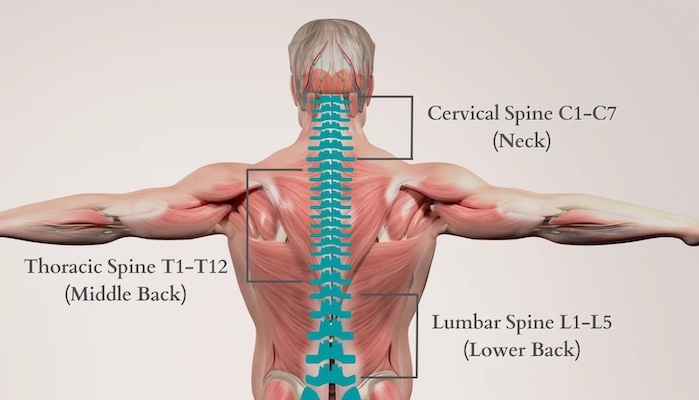
Introduction
At Precision Pain Care and Rehabilitation, we understand how debilitating a spinal sprain or strain can be. These conditions, which can affect the cervical (neck), thoracic (mid-back), or lumbar (lower back) regions, often lead to significant pain and limit one’s ability to perform daily activities. As an interventional pain management specialist, I, Dr. Jeffery Chacko, MD, am here to provide you with insights into the nature of these injuries, and how interventional pain management can effectively help you find relief and regain mobility.
What Are Cervical, Thoracic, and Lumbar Sprains or Strains?
Sprains and strains are common injuries that impact the muscles, tendons, or ligaments of the spine:
- Cervical Sprain or Strain: This refers to injuries in the neck area. It can be caused by poor posture, whiplash, sudden movements, or overuse. Symptoms may include neck pain, stiffness, and reduced range of motion.
- Thoracic Sprain or Strain: This involves injury to the mid-back region. Although less common compared to the cervical or lumbar regions, thoracic injuries may occur due to poor posture, twisting motions, or trauma. Symptoms include sharp pain between the shoulder blades, muscle spasms, and difficulty in taking deep breaths.
- Lumbar Sprain or Strain: Lower back injuries are among the most frequent causes of back pain. Lifting heavy objects improperly, sudden twisting movements or repetitive stress can all lead to a lumbar sprain or strain. Pain in the lower back, muscle spasms, and stiffness are common symptoms.
Sprains vs. Strains
- A sprain involves overstretching or tearing of ligaments, which are bands of tissue that connect bones.
- A strain involves injury to muscles or tendons, which connect muscles to bones.
These injuries can occur due to trauma, such as falls or accidents, or repetitive use and poor ergonomics, leading to chronic wear and tear.
Causes and Risk Factors
- Trauma: Sudden falls, car accidents, or sports-related injuries can cause sprains or strains in any region of the spine.
- Overuse and Repetitive Motion: Repeated movements over time can lead to muscle fatigue and eventual strain.
- Poor Posture: Improper sitting, standing, or sleeping positions can increase the risk of cervical, thoracic, or lumbar injuries.
- Heavy Lifting: Lifting heavy objects without proper technique can put undue stress on the spine, leading to injury.
Risk factors for developing these injuries include age, physical inactivity, poor physical conditioning, and improper lifting techniques.
Symptoms to Watch Out For
- Pain: Localized to the neck, mid-back, or lower back, and can be sharp or dull.
- Stiffness: Difficulty in moving the neck or back due to reduced range of motion.
- Muscle Spasms: Involuntary contractions in the affected area.
- Tenderness: Soreness when pressing on the injured area.
- Radiating Pain: In some cases, pain may radiate to the shoulders, arms, hips, or legs, depending on the area of injury.
Diagnosis and Evaluation
At Precision Pain Care and Rehabilitation, diagnosing a sprain or strain involves a comprehensive evaluation that includes:
- Patient History: Understanding the onset of symptoms, activities that may have caused the injury, and any previous injuries.
- Physical Examination: Assessing mobility, and flexibility, and pinpointing the areas of pain or discomfort.
- Imaging Studies: X-rays, MRIs, or CT scans may be ordered to rule out fractures or more severe conditions.
Interventional Pain Management: A Pathway to Relief
While many cases of sprains and strains can be managed through conservative treatments like rest, physical therapy, and anti-inflammatory medications, there are instances where the pain persists and requires a more targeted approach. This is where interventional pain management becomes crucial.
1. Epidural Steroid Injections
Epidural steroid injections can provide relief by reducing inflammation in the affected spinal region. The medication, which includes a corticosteroid and anesthetic, is injected into the epidural space, targeting the source of pain directly.
2. Facet Joint Injections
Facet joints connect the vertebrae and allow for flexibility in the spine. If these joints become inflamed due to a sprain or strain, facet joint injections can help alleviate the pain. These injections include a local anesthetic and steroid, and they work by reducing inflammation and providing long-lasting relief.
3. Trigger Point Injections
Muscle spasms often accompany spinal sprains and strains. Trigger point injections help relax tight muscles and reduce localized pain, providing immediate relief and improving overall function.
4. Radiofrequency Ablation (RFA)
For chronic pain that hasn’t responded well to other treatments, RFA can be used. This minimally invasive procedure targets the nerves responsible for sending pain signals and uses radiofrequency energy to create a heat lesion, effectively blocking pain transmission.
Rehabilitation and Long-Term Management
Interventional pain management, in conjunction with a comprehensive rehabilitation plan, offers the best path to recovery. At Precision Pain Care and Rehabilitation, we emphasize:
- Physical Therapy: A structured physical therapy program is essential to restore mobility, strengthen supportive muscles, and prevent future injury.
- Posture Training: Learning proper ergonomics and techniques for lifting, sitting, and standing is crucial for preventing future injury.
- Lifestyle Modifications: Maintaining a healthy weight, staying active, and using supportive furniture can significantly lower the risk of recurrence.
Conclusion
Cervical, thoracic, or lumbar sprain and strain injuries can significantly impact your quality of life. However, with early diagnosis and appropriate treatment—including interventional pain management techniques—relief is possible. At Precision Pain Care and Rehabilitation, we are committed to providing our patients with personalized care plans to effectively treat and manage pain, allowing you to get back to the activities you love.
If you're struggling with neck, mid-back, or lower back pain, don’t hesitate to reach out to us. Together, we can create a treatment plan that meets your unique needs and helps you on your journey to recovery.
Precision Pain Care and Rehabilitation has two convenient locations in Richmond Hill – Queens, and New Hyde Park – Long Island. Call the Queens office at (718) 215-1888 or (516) 419-4480 for the Long Island office to arrange an appointment with our Interventional Pain Management Specialists, Dr. Jeffrey Chacko or Dr. Sonny Ahluwalia.















